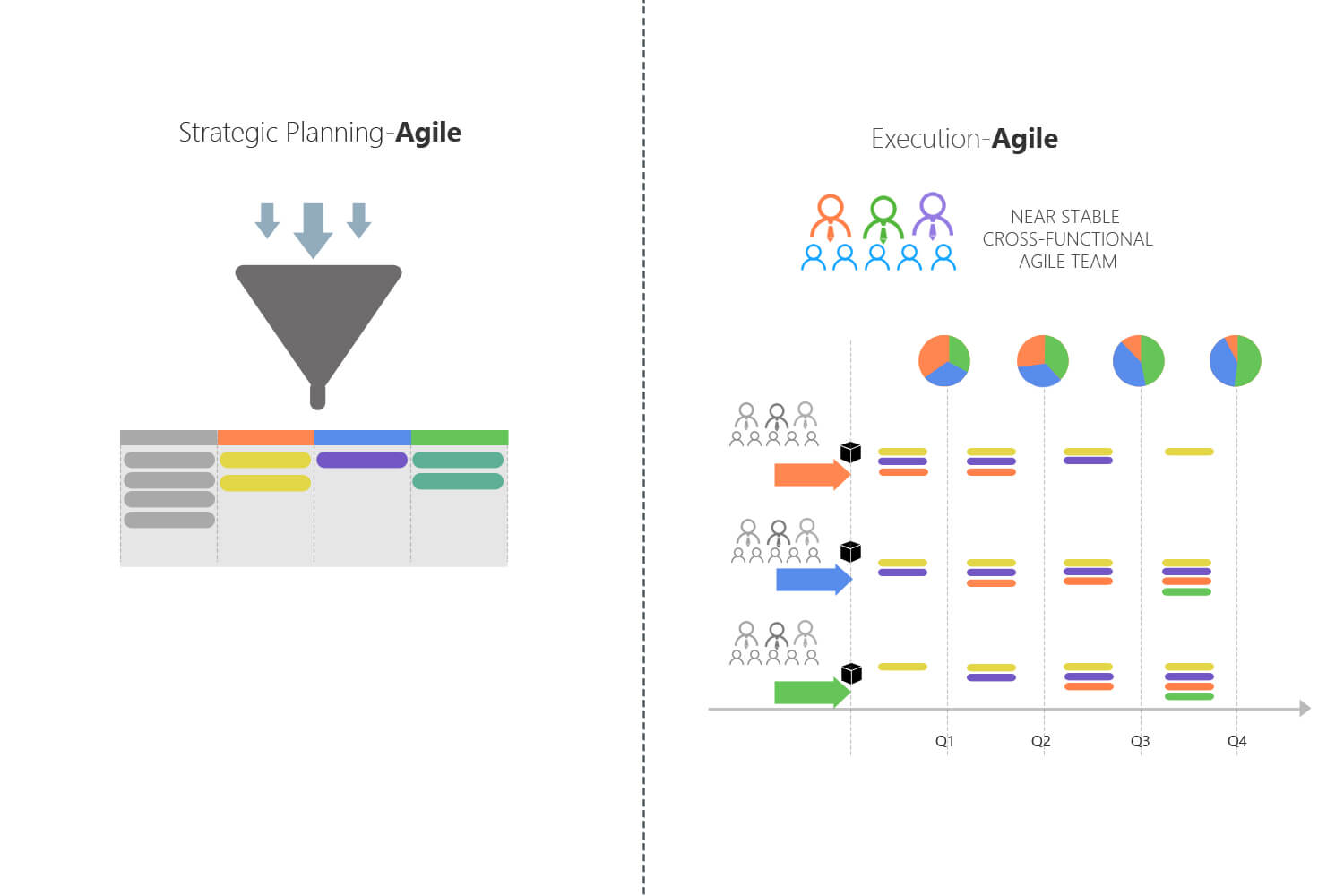Moving away from Project-Centric to Product-Centric Delivery!

Over the years, software engineering and management has borrowed many practices from traditional industries such as, construction, automotive and manufacturing. One such practice is the notion of a 'Project'. According to the Project Management Institute (PMI), a project is defined as a temporary endeavor, undertaken to create a complete product or service. A project is temporary because, it has a fixed start and end date with a predefined scope and cost.
Projects are identified based on probable business cases. Business opportunities from various quarters are identified, prioritized based on potential business benefits and estimated cost, to create a strong business case. This is done under the assumption that the exact market needs, the cost to be incurred and the potential benefits are known upfront. Once the business case is approved, projects are initiated to get them executed. But, do we live in a world of total certainty?
The ongoing projects are usually evaluated based on its adherence to the defined scope, schedule and cost, and of course quality. In a stable environment, where the scope, schedule and cost can be defined upfront, this provides a predictable approach for management and governance.
But, in the volatile and uncertain world that we live in with the very fact that software is not a physical good, accurate predictions are nowhere close to reality. In addition, companies are competing in the market place by exploring innovative ways to create new products and services, where no two products are the same. Hence, software development cannot be a predictable process!
With the adaptive approach becoming the norm for software development, applying the project management principle that endures predictability is a challenge. Projects can no longer be the vehicle for adaptive software development paradigm. Then, what is the alternative approach?
 Figure 1: Product-Centric Delivery Operating Model
Figure 1: Product-Centric Delivery Operating Model
Introducing the 'Product-Centric Delivery' Model
A 'Product-Centric Delivery' model is a new way of organizing people, and continuously delivering value to your customers. Let us look at the steps to be followed by any enterprise to move into this mode of working.
-
(A) Identify Products
What are 'Products'? Organizations across the world provide value to their customers in the form of goods or services. These goods or services are called products and they are often driven by software and IT systems. For example, to a bank that provides digital banking services to its customers, its 'Online Banking Solution' becomes a product. Similarly, for a retail company, its 'Catalog and Product Search' becomes a product. These kind of products are different from the actual physical goods that these companies sell.
-
(B) Organize and Fund Stable Teams Around a Product
Once your products are identified, the next step is to organize and fund your teams around these products. These teams can be Business Development, IT Development, Support and Operations, who think and decide what to build, how to develop and how to manage the product. They must be outcome-oriented, long living, cross-functional and empowered to build and deliver the products on their own. They can be organized as a 'team-of-teams' or 'squads', resulting in better collaboration, focus and ownership from any corner of the world. This will also help in scaling the overall capacity. A common 'Shared Services' team, supporting multiple products might be an added advantage. To know more on Shared Services, read our blog 'Shared Services in an agile Way'.
-
(C) Set Vision, Define Objectives, Deliver and Measure Value
After the products and the teams are in place, you need to define the 'Product Vision'. The Product Vision defines the reason for its existence and the long term goal that it is trying to achieve. It acts like a 'Pole Star', providing guidance for all the decisions made around product development and delivery.
The business stakeholders define the product vision and derive the near-term objectives that will guide the teams to further decide the set of initiatives they need to work on.
The teams then identify relevant product features, plan and deliver those in short increments or timeboxes, thereby delivering continuous value.
At the end of each time-box, the stakeholders will measure the outcome with the stated objectives and changes in the market needs. The findings will help the business to decide on whether to continue investing in the product or not.
Conclusion
Product-Centric Delivery paves a new way of organizing people and continuously delivering value with more emphasis on Outcome rather than the Output. It provides a continuous flow of work to the product teams and continuous value to the end users. It aligns the business strategy to software development and execution, while empowering the teams to decide what is best for their product.
Jile assures product centric delivery with Agile project software
Get in touch for futher quries
Thanks for subscribing to our latest blogs, thought leadership and other product updates!
Read our Privacy Notice to know more. You can opt-out of all communications anytime.

